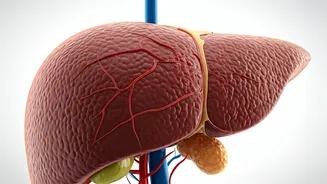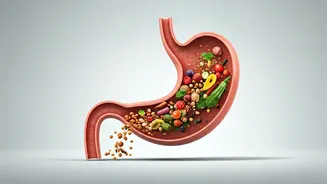Magnesium's Vital Role
Magnesium is an essential mineral, acting as a critical player in over 300 enzymatic reactions within our bodies. It's a key factor in nerve and muscle
function, blood sugar regulation, and the formation of protein, bone, and DNA. A lack of magnesium can significantly disrupt these processes, leading to a range of symptoms that may affect your health. The body can't produce magnesium on its own; therefore, it's essential to get it through your diet or supplements, ensuring you meet your daily requirements to keep your body functioning smoothly. Dietary intake and lifestyle habits impact the balance of this crucial mineral.
Recognizing Deficiency Symptoms
Magnesium deficiency can manifest in various ways, and recognizing these symptoms early is critical for addressing the issue. Some of the most common signs include frequent muscle cramps or twitches, signaling that the muscles aren't getting enough support. You might also experience poor sleep or restless nights, suggesting magnesium's involvement in sleep regulation. Other indicators include constant fatigue without a clear cause, headaches or migraines, and tingling or numbness in your limbs. Weak or brittle nails and bones are also frequently connected with a lack of magnesium. Additional symptoms can include sugar cravings or poor blood sugar control and irregular heartbeat.
Foods to Restore Magnesium
Fortunately, boosting your magnesium intake can be as simple as changing what you eat. Here are five foods that are naturally rich in magnesium. First, spinach and other leafy greens are packed with this vital mineral. Second, almonds and cashews are great snack options. Third, dark chocolate (with at least 70% cocoa) can satisfy your sweet tooth while giving you a magnesium boost. Fourth, avocados are another excellent choice, providing a dose of healthy fats and magnesium. Finally, pumpkin seeds are a very good source of magnesium and are super versatile.
Integrating into Diet
Incorporating magnesium-rich foods into your diet doesn't require drastic overhauls. Start by adding a handful of spinach to your morning smoothie or salad for lunch. Snack on a small amount of almonds or cashews between meals instead of processed snacks. Enjoy a piece of dark chocolate after dinner, but remember moderation. Slice up an avocado to add to your salads or sandwiches. Sprinkle pumpkin seeds over your yogurt, oatmeal, or even use them as a topping for your soups. Aim to include at least a few of these foods in your daily meals to steadily increase your magnesium intake.
Seeking Professional Guidance
While dietary changes can often alleviate symptoms of magnesium deficiency, it's important to consider professional advice. Consulting with a healthcare provider is essential, especially if the symptoms persist or worsen. A doctor can assess your magnesium levels through blood tests and rule out other potential health issues. They can also recommend appropriate supplements or other interventions if necessary. Keep your doctor updated about any new health concerns that you may be facing.













